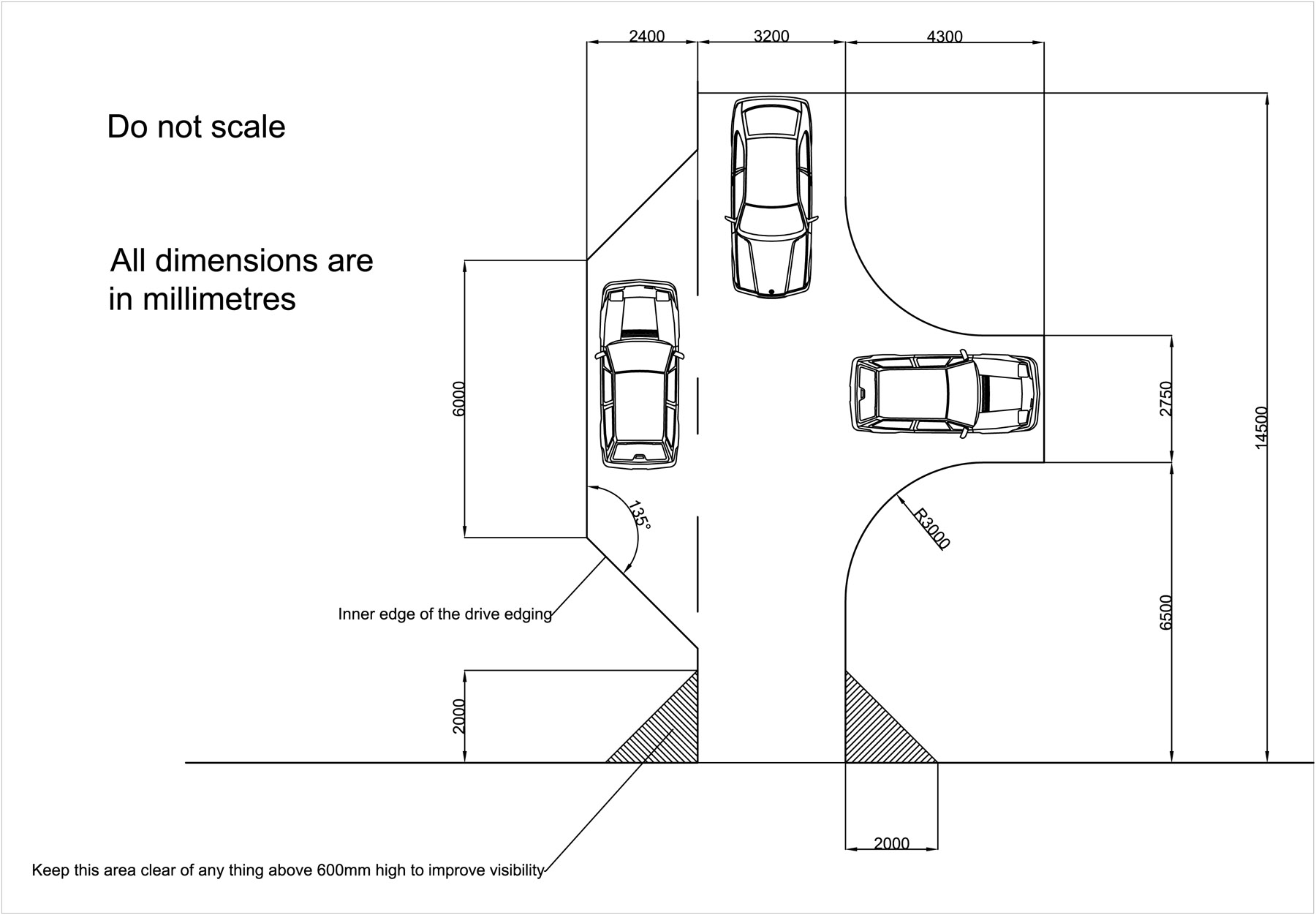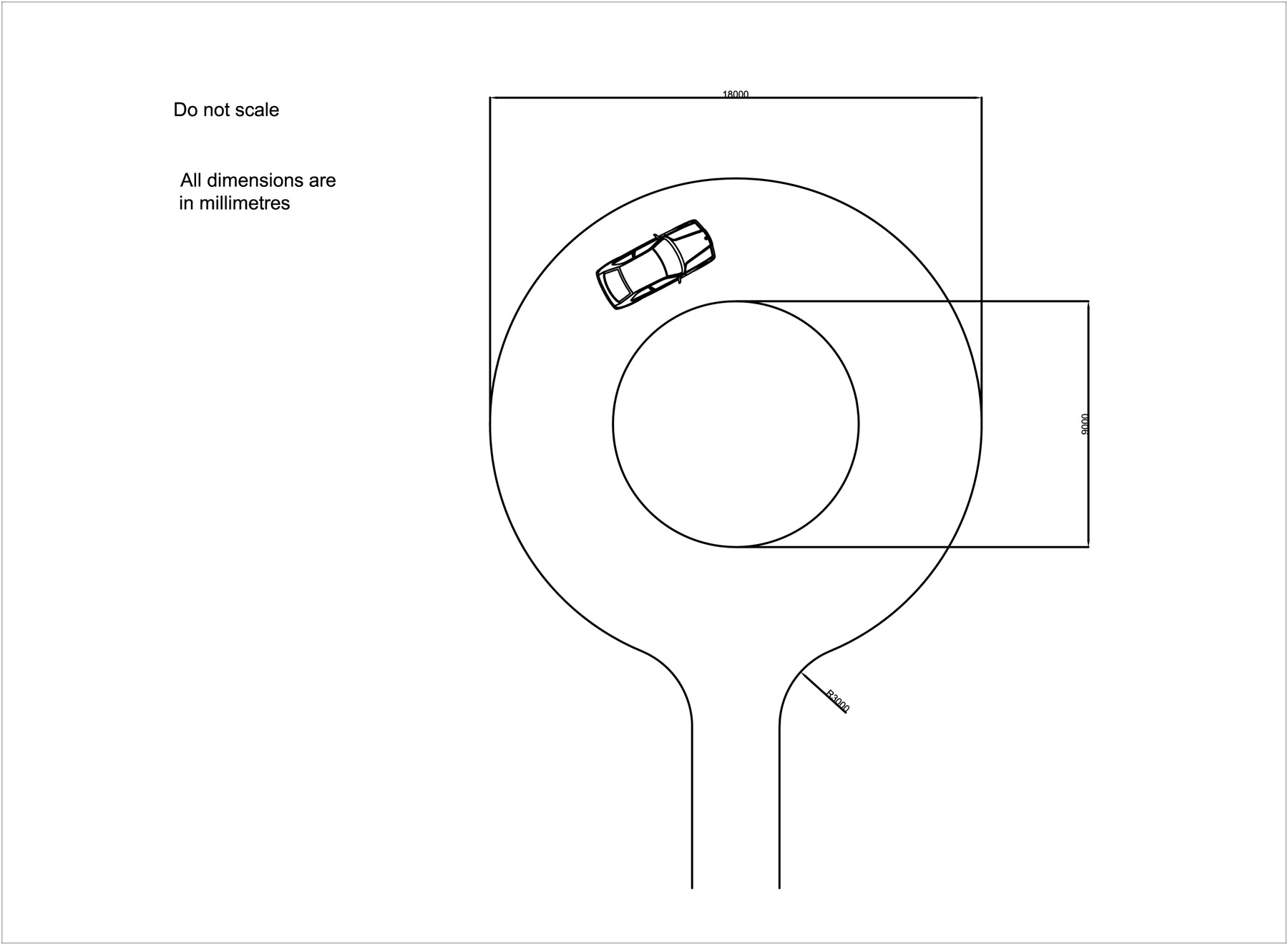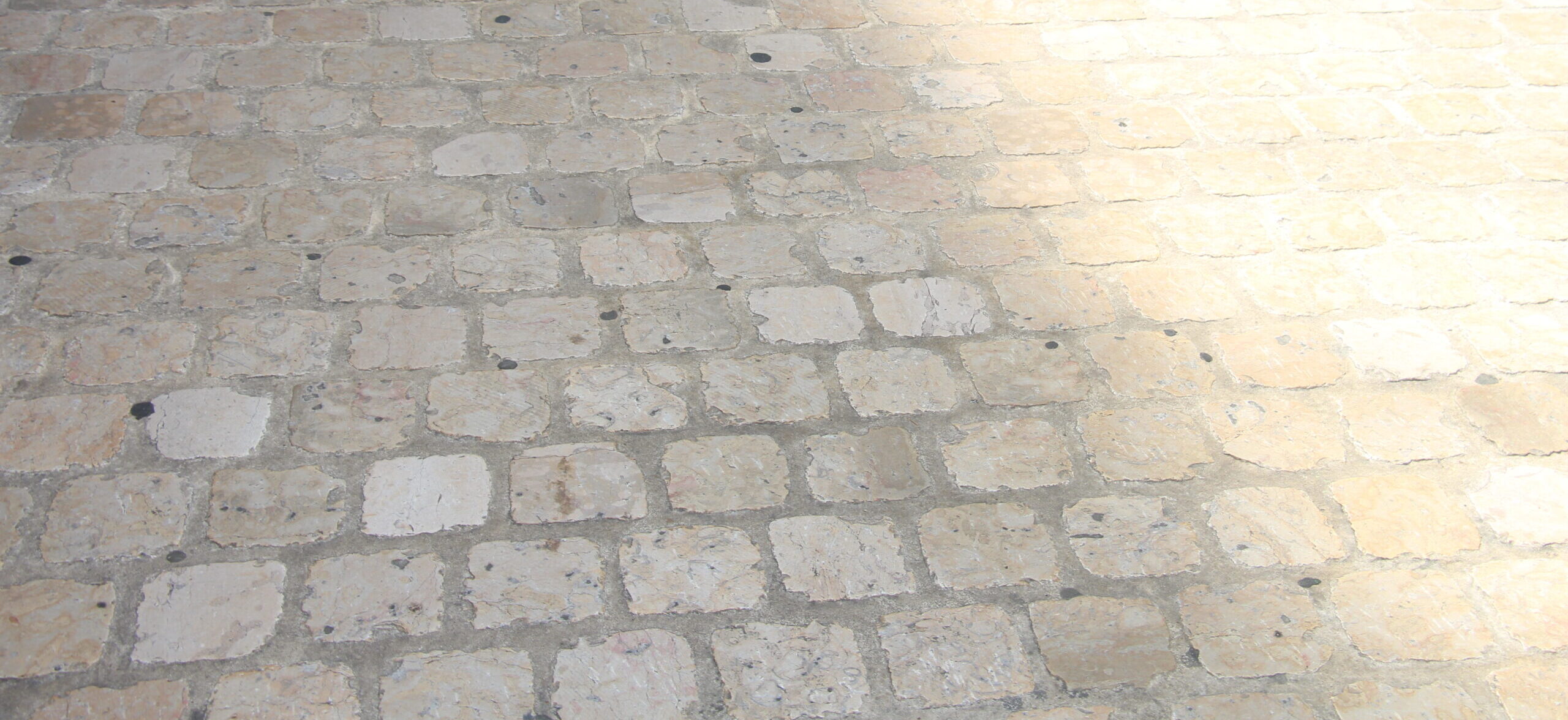With drives, probably more than any other thing in gardens, the most important thing is it actually functions as it is intended. No matter how nice it may look, if it does work as a drive it is a waste of money. As ever there has to be some compromises, for example: you may what a turning circle in your drive but they need an awful lot of space. To start with you need to decide how many vehicles you are going to what to park on the drive and do you need to be able to pull onto the drive, turn around and then drive back out. You also need to consider how often individual vehicles will be needed, ideally you are not going to want to be constantly moving vehicles around just to get one particular one out. Last but not least you need to consider access to garages and house doors and how much of your garden you want to make into the drive.
Now look at what space you’ve got. An average car needs a space of 2.4 metres by 4.8 metres to park on and this doesn’t include space for manoeuvring it. Make a sketch and some vehicle sized pieces of card and try moving them about on the sketch, allowing for how they are going to swing out when turning. At this point you are going to have to make some compromises so consider what is important. Once you feel comfortable with the layout of your drive mark it out in the garden as you plan to have it and actually try it out. It is far easier to change now than later. To help I’ve includes some dimensions that may be helpful at the end.
You are almost ready to construct your drive but before you start checking the cost of materials it is important to consider if planning permission is needed. The pressure for off road parking has led to more and more gardens being paved over and while this does get cars off the sides of roads it means the rain that would soak into the front gardens now runs off them. The amount of rainwater running off a car parking space in a front garden may not seem much but once this is multiplied up for a town, never mind a city, it amounts to a lot of additional water going into drains and ditches. In response to this the government decided to bring in planning controls to cover non-porous paving in front gardens. What this boils down to is that any water that falls onto you drive you need to get rid of on your property and not down the drains. In many cases this can be as simple as providing adequate areas of borders for the water to soak into naturally, but where this is not an option either a permeable surface has to be used or the water has to be collected into drains and lead to a soak away where it can then seep away into the soil. Further details can be found on the government’s planning portal here. Planning rules are complex and special rules can apply in many situations so a 5 minute phone call to your local planning office at this point can save a great deal of trouble later. Whatever you do don’t try to emulate the Ostrich!
Drive surfaces
No drive surface is perfect and they all have their strengths and weaknesses so you have to decide which compromise is going to work for you.
Block paving
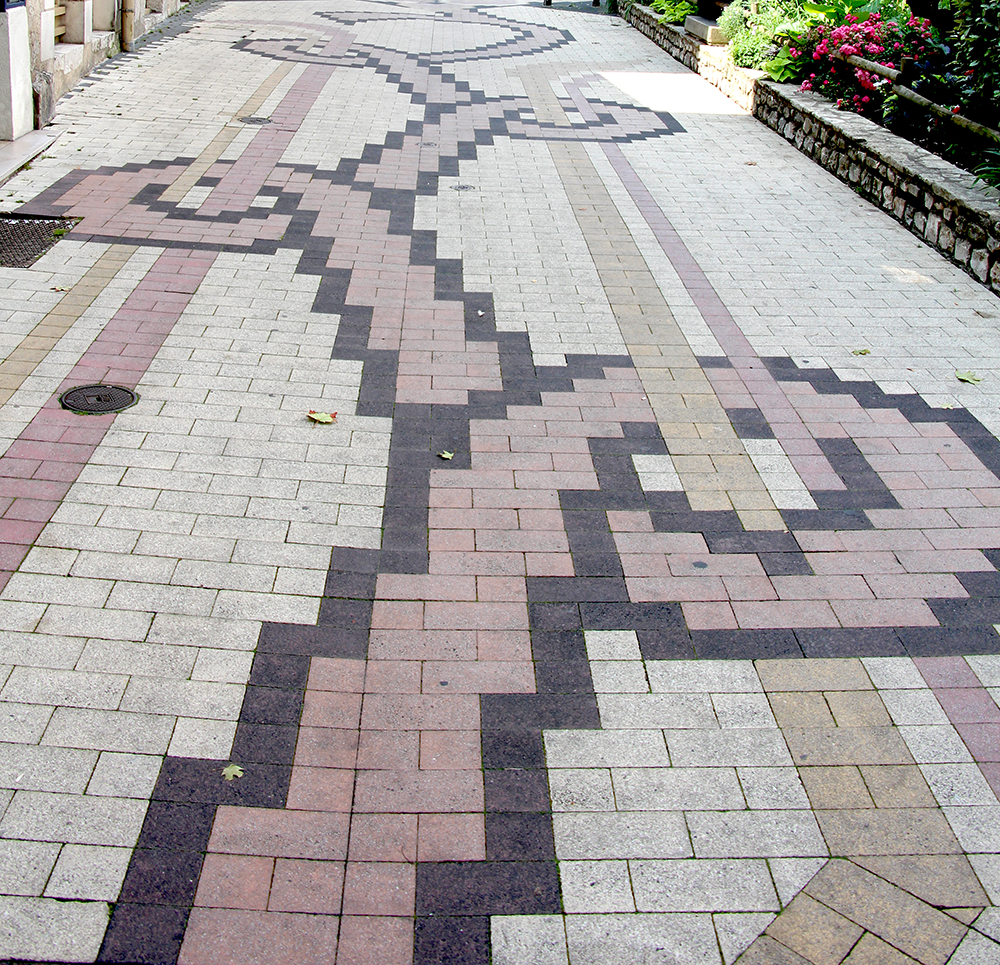
Pros:
- Easily forms curved shapes
- Adapts well to changing slopes
- Sections can be taken up and re-laid to gain access to buried services
- Vast range of finishes
- Some designs are now permeable.
Cons:
- Not suitable for poorly drained ground. The sand bedding course must be well drained and at least 600 mm above the water table.
- The edges must be well retrained
- Prone to sink where car wheels continually run
- The more ornate finishes can be expensive.
Flags
Pros:
- Can be very cost effective
Cons:
- Only the 50mm thick flags are suitable
Grass concrete composite
(Concrete blocks with grass growing through gaps mounded in them)
Pro:
- Simplify the job of getting rid of surface water
Cons:
- The grass will not withstand heavy use
- The grass will not survive under vehicles park continuously over it
- Take time to establish
- If the grass cover breaks down it will quickly become muddy.
Gravel
Pros:
- Adapts to any shape
- Cheap
- Self-draining
Cons:
- Only suitable for relatively level areas
- Weeds quickly establish in the areas that aren’t been driven over
- Moves about
- Cannot be laid onto a hard surface such as existing concrete
Hardcore
Pros:
- Cheap
Cons:
- Easily eroded by water running down it
- Not all hardcore is suitable
Pattern Impressed concrete
Pros:
- Weed free
- Large range of finishes available
Cons:
- Must be laid by a good specialist contractor
- With use the parts receiving concentrated wheel traffic start to fade
- Very difficult to repair successfully
Plain concrete
Pros:
- Weed free
- Relatively cheap
Cons:
- Unattractive appearance
- Needs to be well constructed if it is to last
- Difficult to repair
Pointed setts
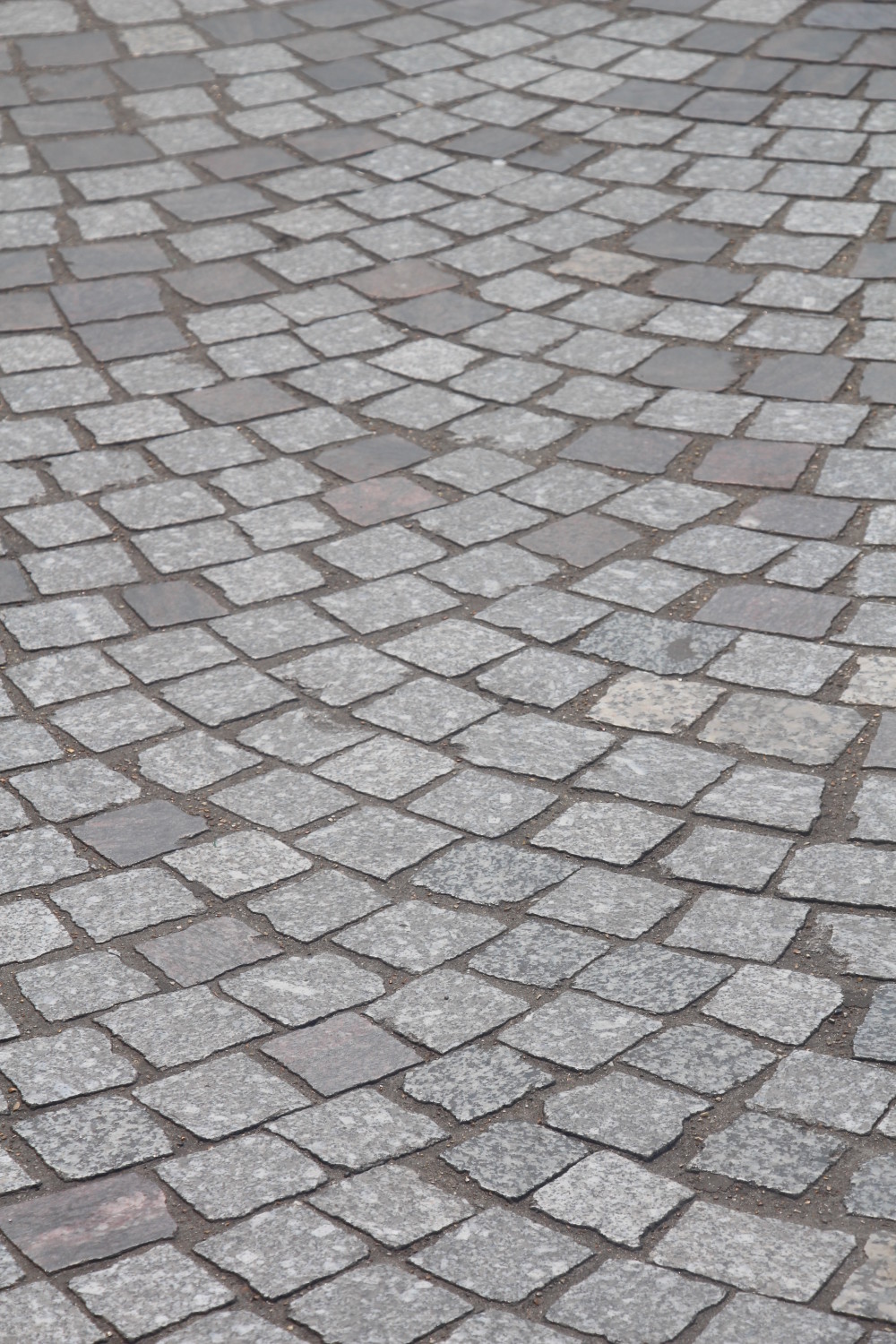
Pros:
- Combination of small paving units set in pointing makes an attractive finish
- Adapts to complex shapes
- Suitable for slopes
Cons:
- Very expensive
- Requires a lot of skill to lay
Resin bonded aggregates
Pro:
- Less prone to move about than gravel
- Available in a range of attractive finishes
Cons:
- Not suitable where it is likely to become contaminated with mud
- More expensive than plain gravel
Tarmac
Pro:
- Adapts to complex shapes and slopes
- A good compromise between cost and length of service
- Well suited to large drives and heavily used ones
- Available in a range of colours
Cons:
- Has to be laid by a good specialist contractor
- Colours only available subject to suitable plant near by
Drive dimensions.
These are for guidance only and should be checked before being used.
- Local regulations and restrictions may apply and you should check before starting any work.
- The drive entrance should only be at the verge crossing.
- The verge crossing will have lowered curbs for the vehicles to get onto the road.
- New or changed verge crossings will normally require permission from the council highways and planning departments.
- Verge crossings must be constructed to special specifications.
- Verge crossings must be constructed by approved contractors.
- Ideally a drive should be 3.2 metres wide (or 2.6 metres if there is a separate footpath).
- If you are putting gates on a drive opening onto a busy drive you may have to set them back 5 metres from the edge of the highway to allow a vehicle to pull safely off the road before needing the gates opening.
- Check you can see clearly from the car driving seat when you pull out of the driveway.
- Any water on the drive must not drain onto the highway, but must be disposed of on site.
- Long drives need special considerations.
- Bends need to be wider to allow vehicles to turn.
- Oil delivery vehicles may only have 30 metre long delivery hoses.
- Oil delivery vehicles are typically 7.2 metres long by 2.6 metres wide and weigh 18 tonnes.
- LPG delivery vehicles need to get to within 25 metres of the fill valve.
- The fire brigade need to get their vehicles to within 45 metres of the house.
